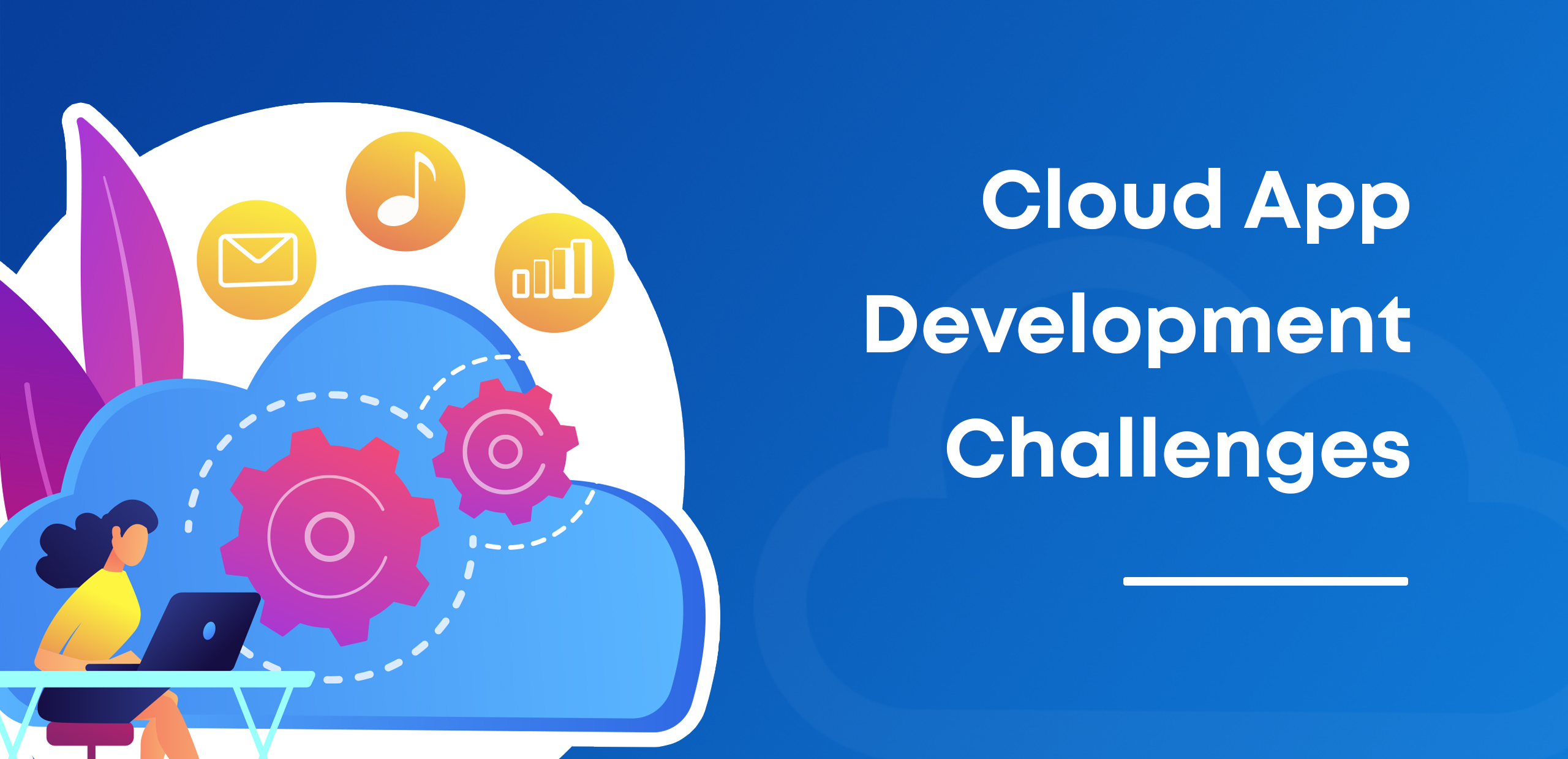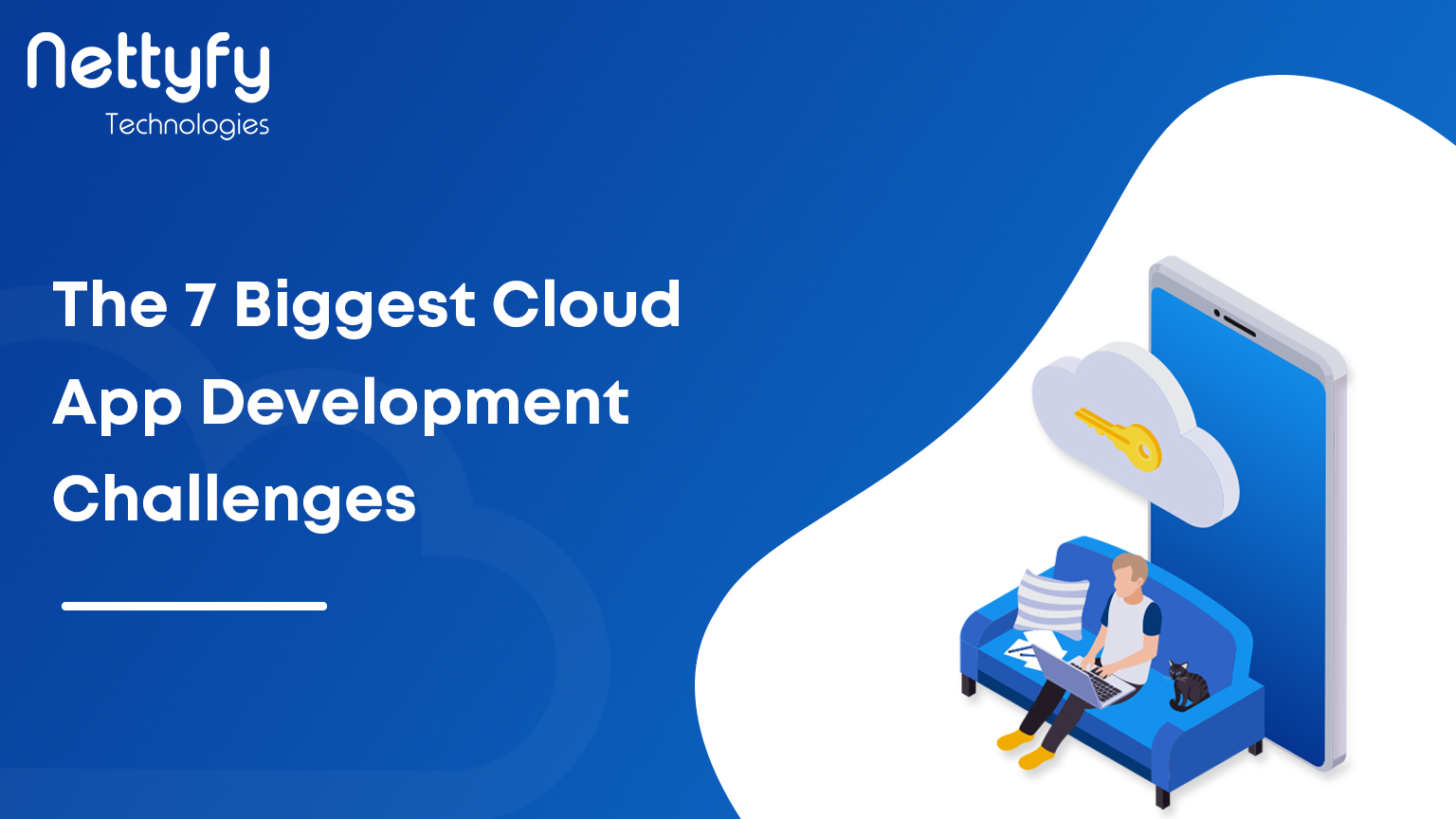The 7 Biggest Cloud App Development Challenges
Since the beginning of the cloud sector, a lot has changed, and the creation of cloud app development is on the rise. The cloud can now be used to acquire a competitive edge, communicate with customers in real-time, and revolutionize businesses. It is no longer merely a way to save on IT costs. You are likely to run into a number of problems as you use cloud computing for your firm, unless you are a brand-new corporation starting from scratch or are an avid outsourcer.
Depending on the organization, cloud adoption challenges might range in size, severity, and shape. None of them should be discounted, even though some of them are terrible, risky, or questionable. Let’s examine seven of the most difficult problems you could encounter when developing cloud applications.
Cloud App Development Challenges:

1. Interoperability and Portability
The challenge:
Writing code that can cooperate with numerous cloud providers at once, notwithstanding their peculiarities, is difficult while working within the cloud framework. In any cloud system, interoperability and portability are crucial components. However, one of the most urgent problems with cloud migration is the ability of systems to communicate with one another. You want your cloud software to be portable across different cloud environments, don’t you? That means it must be possible to execute components or systems created for one cloud environment in another cloud environment.
Also read: Cloud Migration Strategy
The solution:
Adopt the essential cloud computing standards to assure interoperability. The more data that is accessible, the more interoperable platforms and software there will be. It will be simpler to use and more affordable to implement, run, and maintain if the operational protocols are more standardized.
2. Performance Problems
The challenge:
Without knowledge of your data centers’ locations, you cannot estimate how long it will take to render the data, user interface, style sheets, and other elements that make up your fantastic app experience. Even if it only lasts a few seconds, it will be enough to turn off your users.
The solution:
The fix is to thoroughly research the infrastructure of your cloud service provider and to ask specific questions to ensure that your apps’ performance is not adversely affected over time. Choose the programs that can be moved securely to the cloud, and then routinely check on their performance. Test frequently and early. When your corporate applications start interacting with other cloud-based applications, you are starting a new integration scenario, so making sure end-to-end performance testing is essential. Do your homework! Look for strategies to enhance application development to guarantee the highest performance.
Also read: Cloud Computing Trends 2023
3. False Scalability Promises
The challenge:
Ensuring the scalability of your cloud-based apps is one way to achieve performance and budget efficiency goals to the fullest. All cloud service companies claim to offer scalable services, but not all can actually deliver. Make sure your back end can handle the data load in case app usage spikes.
The solution:
Opt for a hybrid cloud strategy to have the necessary flexibility and scalability; a hybrid cloud can grow or shrink to meet your changing needs. Avoid preconfigured programs that could cause you to overpay or require more than you have.
4. Reliability and Availability
The challenge:
The primary purpose of cloud apps is to maintain key activities with little to no downtime, even in the case of a catastrophic accident. However, cloud service providers frequently don’t offer round-the-clock support, which leads to frequent disruptions. Therefore, it is crucial to keep an eye on the services being offered using both internal and external tools.
The solution:
Monitor consumption, SLAs, speed, robustness, and the business dependencies of these services to guarantee your cloud-based apps are always accessible. Check the level of security your cloud storage provider is providing and make sure it complies with your company’s needs.
5. Loosely Coupled Service Design
The challenge:
It’s critical for cloud apps not to be tightly tied to the underlying service logic and execution in a customer-centric environment where needs are always changing. Despite being straightforward in theory, creating services in a cloud environment so that applications can be loosely connected is frequently a struggle.
The solution:
There is a demand for more instruction, training, and illustrations of excellent and dependable service design. When cloud apps are loosely coupled, they are independent, providing the necessary flexibility and reusability when components are added, changed, or removed. Developers that use services from several vendors must be aware of the various protocols and be accountable for the orchestrated behavior of their applications.
6. Query Oriented vs. API-Oriented Programming
The challenge:
To derive information like federated data sets, developers must adopt a more functional query-oriented style of processing for map reduction, streaming, and complicated event processing. These systems use an extension of SQL or XQuery-like operations, where clients pass in application-specific functions, which are executed against federated data sources, rather than a sizable surface area of OO APIs. While the majority of developers are familiar with fundamental SQL, others are unfamiliar with complicated queries or function compositions.
The solution:
Success with cloud apps requires training and practice in creating query programs.
7. Application Security
The challenge:
Application developers have always needed assistance and guidance with regard to areas of application security that go beyond permission. Applications must make sure that crucial security operations are carried out outside of the browser because client-side security is advancing but still presents a problem in large part owing to the condition of browsers.
The solution:
Ensure that all data is encrypted with strong encryption; to handle security issues, use a reverse proxy; alternatively, utilize SSL and other best practices to satisfy the security requirements of large companies.
Final Thoughts:
Overcoming Your Cloud App Development Challenges
Anything may be supplied as a cloud service wherever and whenever you need it, from applications to business processes. The development of cloud applications promises significant advantages for small, medium-sized, and large businesses. While some observers claim it is still in its infancy, businesses are under enormous pressure to utilize cloud services once they have a thorough understanding of the difficulties they present. The move to the cloud has many advantages, but it’s crucial to pick a supplier who will accompany you through it and help you overcome any obstacles.
Similar to any significant business change, moving to the cloud will begin slowly, but as you begin to see the advantages, the growth will be significant. So proceed with caution and gradually discover the benefits that cloud app development may provide your company.
In order to help you achieve your goals more quickly, Nettyfy Technologies offers specialised cloud services that draw on our industry knowledge, commercial savvy, and cutting-edge technology. With the aid of our knowledgeable staff, in-depth sector expertise, state-of-the-art machinery, and comprehensive support, you may increase the reach of your company. For any cloud app development services, get in touch with us right now. We have the knowledge and experience to handle any kind of request with complete satisfaction.


